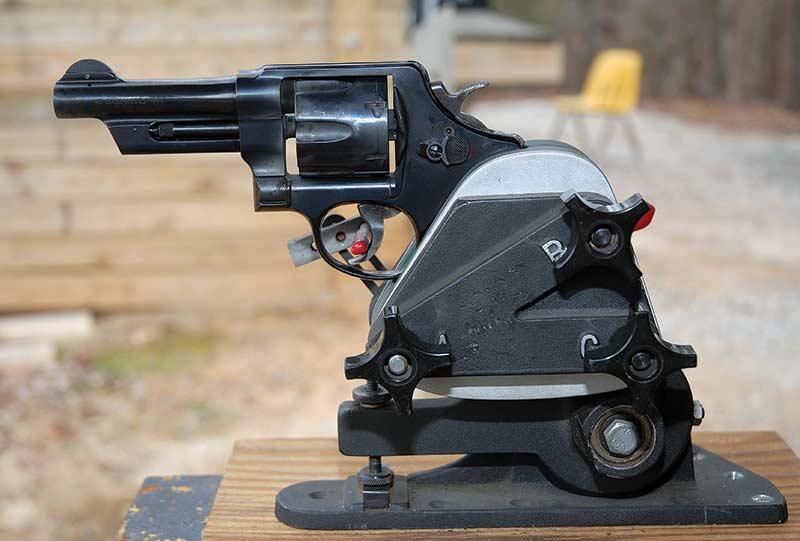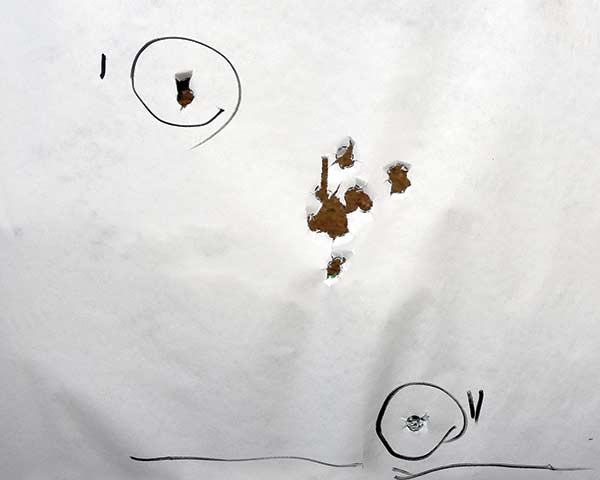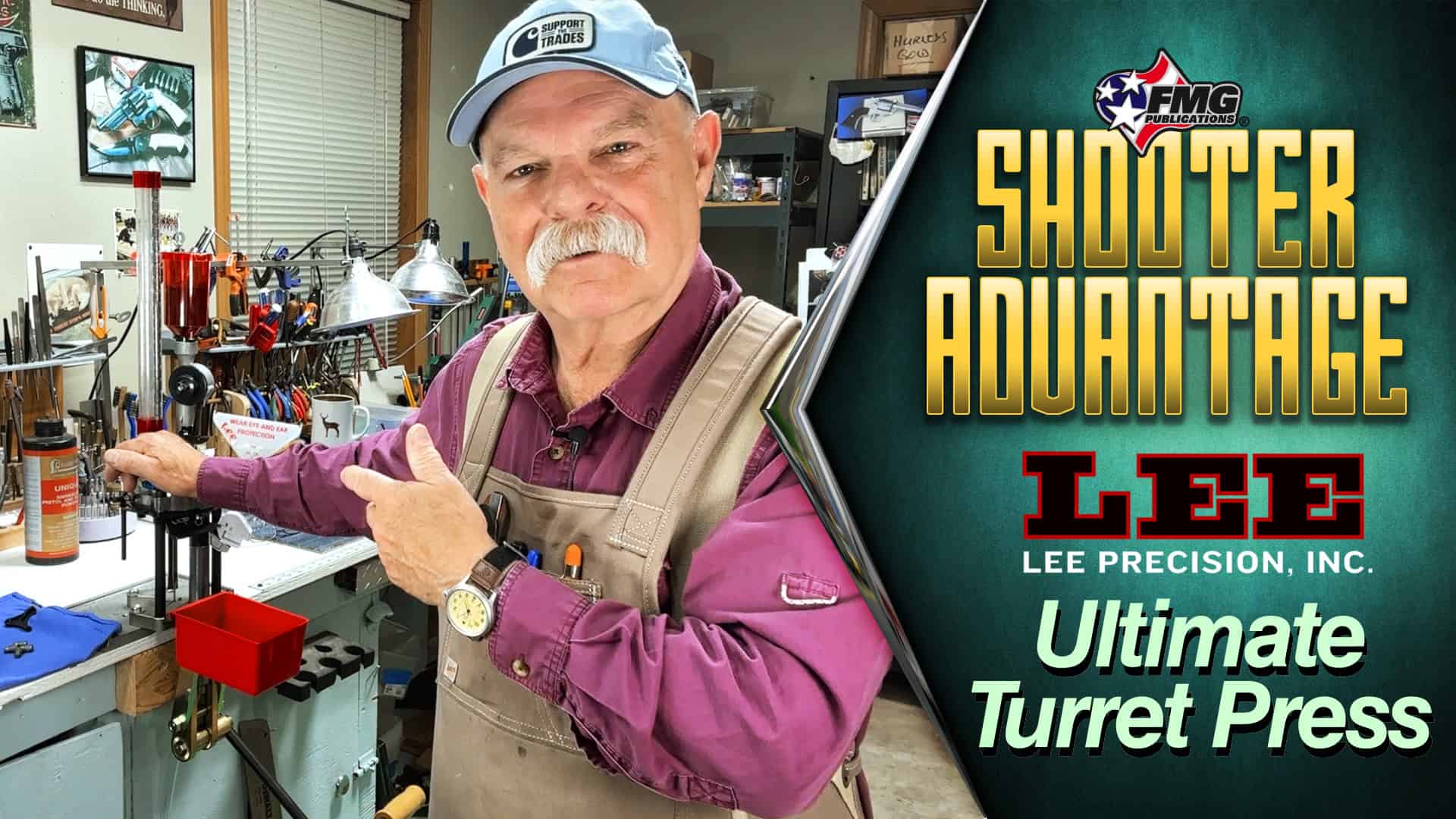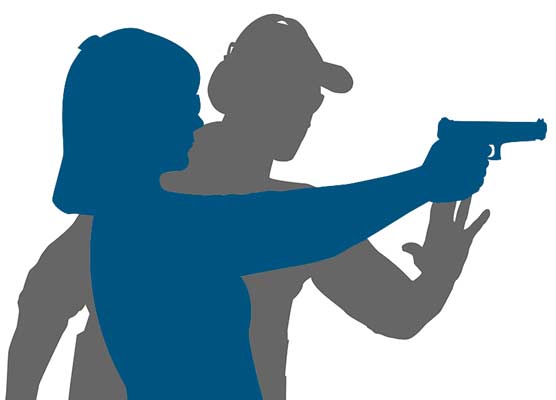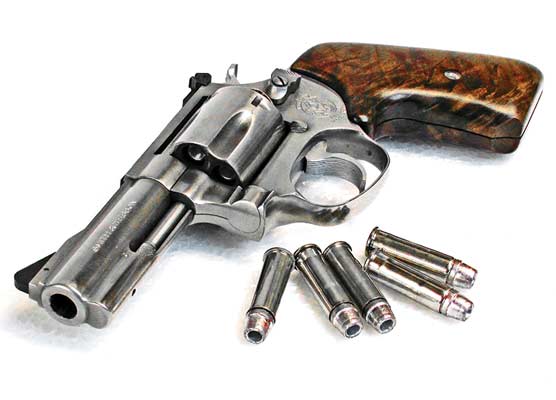Shotguns Or Rapiers?
.45 ACP Revolver Accuracy
Over the years I’ve tested dozens of .45 autos, but never subjected any older revolvers to a formal test. My collection of S&W revolvers has grown and it dawned on me I had examples of all the models of .45 ACP revolvers that were regular catalog items. One of the things you hear is the revolvers leave something to be desired in terms of accuracy. I knew there was something to that story since both 1950 and 1955 model S&Ws in my collection would occasionally put shots pretty far away from where the sights said they should be. I had a similar experience with a Colt 1917. The logical conclusion is to construct a test using examples of all the S&W .45 ACP revolvers from 1917 to date.
When World War I came along it really wasn’t hard for Colt or S&W to adapt existing models (S&W 2nd Model .44 Hand Ejector and Colt the New Service) to the .45 ACP cartridge. The challenge was shooting a rimless cartridge in a system that depended upon a rim for extraction. S&W’s solution was the dreaded half-moon clip which was simply a stamped out piece of spring steel holding three cartridges. It served to establish the proper headspace and was also very fast to load.
In the 1920s there were surplus revolvers aplenty and the ammo companies came up with the .45 Auto Rim cartridge to eliminate the need for clips. The interior case dimensions are the same as the ACP but a thick rim was added to make it work right. Much more recently the full moon clip holding six rounds came along and has become the preferred means of loading. It makes it possible to do a blindingly fast reload for someone with the right skills — often quicker than a magazine change. Auto Rim brass is readily available for handloaders and factory loaded ammo is available from Black Hills, Georgia Ammo and Cor-bon.
Actually that list of .45 ACP revolvers isn’t as long as you might think. Colt only made one and S&W only a few models although there are more variations. The .45 Hand Ejector U.S. Service Model of 1917 was produced in large numbers during World War I to supplement the 1911 pistol and a total of 163,476 were produced. Following the war a commercial model continued in the catalog. In 1937 S&W got a contract to produce 25,000 revolvers for the Brazilian Government that are identified by the Brazilian crest on the side plate. Sales continued sporadically until 1949 when it was officially dropped.
The 50 Target, as the .45 Hand Ejector Model of 1950 Target is commonly called, was an adaptation of the Third Model .44 Hand ejector with a light ribbed barrel and extractor shroud. It featured S&W’s new target sights that were adjustable for both windage and elevation. It was produced from 1950 to 1961 and after 1957 became known as the Model 26.
The .45 Hand Ejector Model of 1950 is very much like the 1917, minus the lanyard ring and including S&W’s new “short” action and hammer block safety. Production began in 1951 and was cataloged until 1966. After 1957 it was known as the Model 22.
One of the complaints S&W received about the 1950 Target was the thin barrel which was not popular with target shooters. To rectify this the company increased the barrel diameter by about 0.15″ and the width of the rib proportionately. This gave it considerable more weight and appeal to bullseye shooters. Hence, the .45 Hand Ejector Model of 1955 was born. Later it would be known as the Model 25. Production continued until around 1991 when S&W elected to work only with stainless steel. Then it became the Model 625 which continues in production today.
Modern Guns
In 2005, on the urging of American Handgunner and Clint Smith of Thunder Ranch fame, S&W brought back carbon steel in the form of a Model 21 .44 Special Thunder Ranch issue. The gun was far more popular than anyone expected and while the gold TR logo drew some disdain, the concept proved to be, once more, popular and effective. The .44 Special has been under-represented and American shooters proved they still love it.
Then it was something of a nobrainer to do the same in .45 ACP, so the Model 22-4 came back in 2006. It has a special Thunder Ranch serial number but eliminated the gold. It’s marked .45 Cal. Model of 1950 on the barrel just as the original and has the fourth sideplate screw that had been discontinued in the 60s. It also marked the return of a square butt revolver to the S&W line. And by the time you read this there will be two new variations of the 1917.
Some models of .45 ACP revolvers have continued to be a part of the standard S&W catalog as well as custom versions from the Performance Center. S&W’s increasing use of aluminum alloys and titanium gave us the Model 325 lightweight variants as well only fairly recently.
Moon Clip Mischief
Obviously we can’t test every one and must assume there is continuity among the current models, so the choice was made to include two of recent production. Those are a Model 22-4, and a Model 625-8 in the Jerry Miculek signature style and in Performance Center dress.
The test plan was to fire all the guns from the Ransom Rest at 25 yards. All would get the same ammo — Black Hills 200 gr. LSWC — which has a long standing track record with me and also because the lead bullet would likely be more forgiving of differences in chamber mouth dimensions that I knew to exist. S&W calls this dimension the “ball end diameter” but most shooters don’t know S&W-speak and call it mouth anyhow. I also know from long experience each charge hole — S&W for “chamber” — can have an effect on accuracy, so the plan was to fire three 12-shot groups from each gun. That way any irregularity due to a single chamber will be included and give a more repeatable accuracy value.
When the day of testing arrived we began by loading a bunch of full moon clips, but when I tried to load the first gun the left side of the Ransom rest made it impossible. Since the original half moon clips are thankfully gone the only option was to shoot without them and pluck the empties out as best I could. Now S&W makes it abundantly clear in their instructions you must use clips with new models so I was somewhat fearful. All the older models shot the entire test without incident, but the new guns did have a couple of misfires. All of those rounds fired when hit again. Later to be sure not using clips didn’t influence accuracy results, I went back and shot a couple of guns by hand with — and without — moon clips and found no difference at all. I also shot a couple of groups with .45 Auto Rim handloads
that showed no difference.
Killing Target Frames
Testing began with the S&W 1917 and went downhill immediately. I have a motorized target mechanism using standard butcher paper rolls so the target can be advanced from the firing line. The butcher paper is 18″ wide and the effective target size is a little over 17″ square. When we set things up we try to make sure the rounds are close to the middle of the target but a little variation does no harm. Usually.
As shooting went along I clearly saw the frame rock when a bullet struck the steel. I stopped, checked to make sure nothing had gotten loose with the rest and fired another shot. It was more pattern than group. With the next gun the frame got hit twice more even though the majority of the shots were well on the target. I was in rear fear for my target and the frame did get hit again but no permanent structural damage was done and as soon as we got to the newer revolvers groups began to look like, well, groups.
To say I was surprised is a mouthful of understatement because even though I was not expecting great things, most groups were truly dismal and there can be no doubt as to the cause, since the new guns shot respectably. I’ve gotten sub-2″ groups from the same ammo in 1911s. At home I carefully measured the ball end diameter of each charge hole and the average value is shown in the table. And this number really tells the tale: big hole = lousy accuracy.
So now there’s a new question for me to answer. What to do with the several early guns I already have. Well, one of the good news things for collectors is you don’t have to shoot them and since I have one of the newer guns I probably won’t, but that surely doesn’t apply to everyone. Lots of shooters like me enjoy shooting .45 ACP revolvers and for casual, close range plinking, they will still be just fine.
If you’re a handloader the first thing to do is load some rounds using 0.454″ diameter bullets. We’ve known for years this can be a simple solution to problems like these, but if your chambers are bigger that may not be enough. I checked some of Remington’s 250 gr. .45 Colt bullets and find they run closer to 0.456″. Loaded into .45 Auto Rim cases they’ll work fine although there may be a little bulge near the base of the bullet. It will be harmless, albeit a little unsightly.
But if you really don’t want to go to all the hassle there is still hope. Charlie’s home for orphan revolvers is now open. Our motto is: Send me your tired, your poor — they will find a happy home here.
Subscribe To American Handgunner

Get More Revolver Content Every Week!
Sign up for the Wheelgun Wednesday newsletter here:

